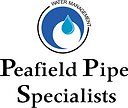Hydrostatic pressure poses a significant risk to the durability and stability of concrete structures. To prevent potential damage and failures, it is crucial to regularly test for hydrostatic pressure. This article provides a comprehensive guide on how to test for hydrostatic pressure in concrete, offering insights into various testing methods and their interpretation.
Understanding Hydrostatic Pressure in Concrete:
Hydrostatic pressure refers to the pressure exerted by a fluid, typically water, on a structure. In the case of concrete, factors such as groundwater levels, inadequate drainage, and poor construction practices can contribute to an increase in hydrostatic pressure. High hydrostatic pressure can lead to cracks, erosion, and even structural failure. Therefore, testing for hydrostatic pressure becomes essential.
Preparing for Hydrostatic Pressure Testing:
Before conducting hydrostatic pressure tests, certain preparations are necessary. Firstly, ensure you have the required equipment and tools, including pressure gauges, water columns, and pressure plates. Additionally, prioritize safety precautions, such as wearing protective gear and adhering to relevant guidelines. Lastly, prepare the concrete surface by cleaning it thoroughly and ensuring it is free from debris or existing cracks.
Methods for Testing Hydrostatic Pressure in Concrete:
Water Column Test:
The water column test is a commonly used method to measure hydrostatic pressure. It involves inserting a water-filled column into a borehole drilled into the concrete structure. By monitoring the water level in the column, you can assess the pressure exerted on the concrete. The results are interpreted by comparing the measured pressure against predetermined thresholds. The water column test provides a simple and cost-effective way to assess hydrostatic pressure levels.
Pressure Plate Test:
The pressure plate test involves placing a pressure plate on the concrete surface and applying a known load. By measuring the deflection of the plate, you can determine the hydrostatic pressure. This test offers a localized assessment of pressure distribution and is useful for identifying specific problem areas. However, it requires specialized equipment and is more suitable for smaller areas of concern.
Pressure Injection Test:
The pressure injection test involves injecting water under pressure into pre-drilled holes in the concrete. By monitoring the water flow and pressure, you can assess the permeability and potential for hydrostatic pressure. This test provides insights into the concrete’s resistance to water penetration and can help identify areas prone to hydrostatic pressure-related issues.
Analyzing Test Results:
Interpreting the test results is crucial for determining the presence and extent of hydrostatic pressure in the concrete. If the results indicate high pressure levels, it is essential to take appropriate action promptly. Identify potential problem areas, such as cracks or compromised drainage systems, and prioritize repairs or structural reinforcement. Consider consulting with experts to assess the severity of the situation and develop an effective mitigation plan.
Importance of Regular Testing and Monitoring:
Regular testing and monitoring of hydrostatic pressure are paramount to prevent long-term damage and ensure the structural integrity of concrete. By detecting and addressing issues early on, you can avoid costly repairs and potential safety hazards. It is recommended to establish a testing schedule based on factors such as the type of structure, environmental conditions, and usage patterns.
Conclusion:
Testing for hydrostatic pressure in concrete is an essential aspect of maintaining the structural integrity and durability of concrete structures. By understanding the causes and consequences of hydrostatic pressure, preparing for testing, and employing appropriate testing methods, you can identify potential issues and take proactive measures to mitigate risks. Regular testing and monitoring should be prioritized to safeguard the longevity of concrete structures and ensure the safety of inhabitants. By following these guidelines, you can effectively assess and manage hydrostatic pressure in concrete, ultimately enhancing the longevity and reliability of your structures.
